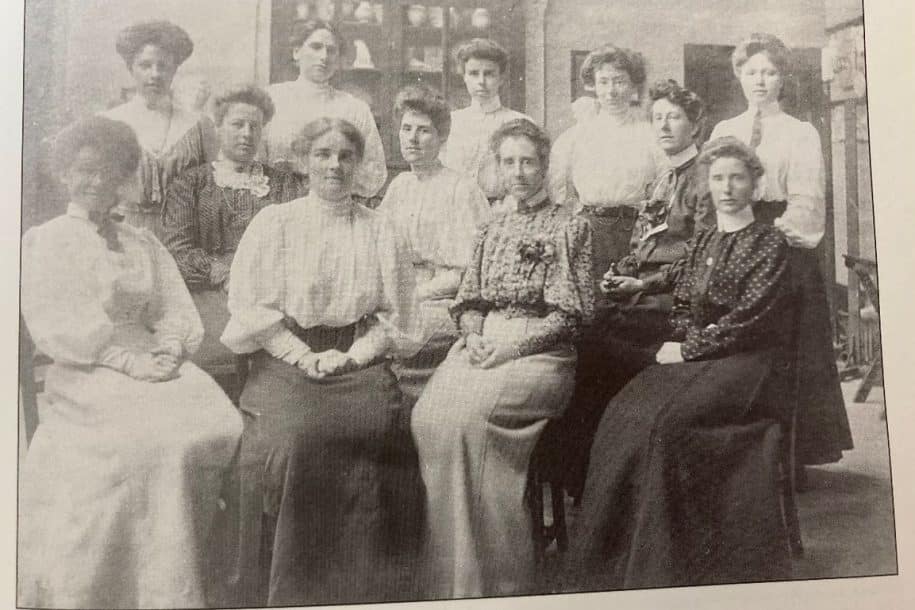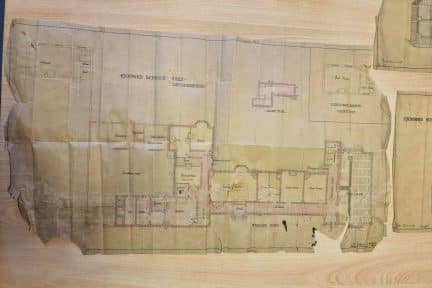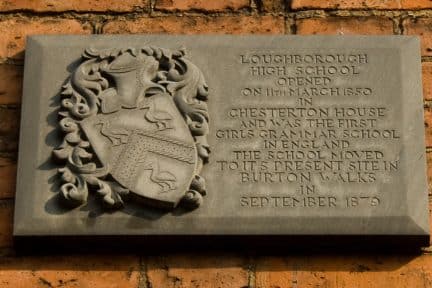The LHS Main Curriculum

When LHS opened in 1850, it was the first Girls Grammar school in the UK, which opened especially for the teaching of girls. The inclusion of ‘grammar school’ is an important distinction to make; whilst there are older all girls schools in the country, they were not Grammar schools. First appearing in the medieval period and continuing into the Early Modern period, Grammar Schools were schools that were originally founded within/as part of churches to teach Latin, and later other ancient languages such as Greek and Hebrew. This was the case for LGS, founded in 1495 at the Parish Church. By the 18th century however, the demand for ancient languages had fallen as the new commercial classes required modern languages and commercial subjects. By this point, most old and new grammar schools also taught arithmetic and English amongst other subjects. The 19th century saw several reforms in Grammar schools, culminating in the Endowed Schools Act of 1869. This Act reinvented Grammar Schools into academically orientated secondary schools which followed a literary or scientific curriculum, whilst also teaching classical subjects to boys or girls.
When the High School first opened in 1850, and during the first two decades of its existence, the girls were taught reading, writing, arithmetic, English grammar, geography, biography, history, astronomy, singing and needlework. The list of subjects at the boys school was very similar, although boys were also taught Greek, Latin, mathematics and science. Despite these differences, the subject lists are very similar, perhaps more so than we might expect of this period. When it came to girls’ schooling, educational reformed wanted to teach girls the same subjects as boys, including the more academic subjects. Miss Beale, a famous educationalist and founder of North London Collegiate School (which was opened a month after LHS) said that “the old rubbish about masculine and feminine studies is beginning to be treated as it deserves. It cannot be seriously maintained that these studies which tend to make a man nobler or better, have the opposite effect upon a woman.” Whilst it is true that the boys’ school fees cost more money, this was more likely due to parents being more willing to pay for the education of their sons than their daughters, rather than it being seen as superior.
In the early period of the school’s foundation, there were however a few differences in subjects, most likely prompted by differing expectations of what girls and boys would do after they left school. Despite the want of the first Headmistress and the trustees of the Charity to establish a school which gave girls the same educational opportunities as boys, they couldn’t entirely follow the same curriculum as there were some subjects deemed just too unsuitable whilst other knowledge was required. During a period of anxiety over the belief that women’s capabilities for intellectual thought meant that they would not be able to have children and the strong expectation that girls would marry and therefore be a dependent of their husband rather than an independent individual. Girls were expected to cultivate lady-like traits and accomplishments that would attract a suitable partner and make them good wives and mothers rather than the ability to think and understand academic pursuits. Therefore, whilst the school wanted to give girls a good education on par with boys, they had to be careful that they were still teaching their pupils ladylike accomplishments, such as sewing and singing alongside their studies to convince parents to send their children to school. Other more academic subjects restricted to boys at this time such as classical languages were introduced later. For example, when the school opened, Latin was not part of the curriculum. Instead, it was introduced in 1886 by Miss Dugdale. Other areas which highlight differences are the arts and domestic science, science and physical education which will be talked about later.
In 1879, there was a significant move of the school from its original location at Chesterton House to a specially built building at Burton Walks where LHS still resides. At Chesterton House, there was only a few rooms which were not particularly well quipped. By contrast, the new buildings at Burton walks were fit for 100 girls with accommodation for boarders and the Headmistress and multiple classrooms, including those for subjects which needed specific spaces such as Domestic Science and Science. The 1878 plans show the original layout of the school.


The memories of one alumna, Mrs Biddy Clements, who was at school for three years between 1897-1900 has her memories of school noted in the book published as part of LHS’s 150th anniversary. She remembered “a school routine which included no school trips, no uniform, not very much homework and no hockey. She enjoyed arithmetic, indeed working with figures was what she did all her working life, although ‘I never had a calculator.’ She remembered English being mostly reading books and writing essays… She claims to have been ‘not too bad’ at Geography; some of the facts she learnt in History won her a prize in a church quiz many years later; she was very good at music… but was no good at drawing. She remembers doing a bit of cooking and a bit of sewing, but no science.” Biddy’s memories highlight the sparsity of the curriculum at LHS to the core subjects, although we cannot fully take Biddy’s memories on their own as a reflection of the LHS curriculum at the turn of the century as memories are not always reliable as we can see with science, which she would have been taught, it is not something she remembers. Unfortunately, Biddy’s education was cut short at 14 as she had to leave school to care for her mother; this was the case for many girls, often having to leave school to take on domestic duties at home which took precedent over their education.
The period from 1900-1945 saw immense change within the world and the lives of women and girls across society. Both World War one (1914-1918) and World War Two (1939-45) in particular changed the lives of women significantly, especially in terms of what they could expect from a career as more women were allowed into the workplace, although in very limited sectors and occupations, such as teaching and nursing, especially in the earlier period. 1918 had seen another Education Act, which placed greater value on secondary education and resulted in a significant growth in the number of pupils, which grew from 300 in 1922 to 400 in 1929.
These professions were not for everyone however, and the school curriculum reflected this. The form notes in the 1920s magazines highlight how the pupils were streamed into two forms; the domestic and the classical. Those in the domestic forms learned sewing and cookery with those in the classical forms being taught Latin and Mathematics. This streaming continued into the 1950s, stopping before the 1990s, although we are not sure when. This act of streaming the pupils into domestic and classical forms, and ergo teaching only certain girls more academic subjects is reflective of the belief that only certain girls were capable of achieving academic success, and therefore have the opportunity to go into higher education. This is unlike today, where all girls are given the opportunity to study their interests, including studying both arts and sciences at the same time rather than having to pick one or the other.

The School Mistresses around 1910
One alumna who attended LHS from 1943-50, experiencing both wartime and post-war noted that the aim of school was “to do as well as possible and perhaps qualify for Further education. Industry, just after the war, was becoming interested in employing university graduates.” However, she does still say that the expectation for a woman to become a teacher, nurse or full-time housewife remained strong.
General life and the curriculum at school were affected by the wars, although not to the same obvious extent that the boys’ school was (many of their teachers, old boys and older pupils were called up to war). At the girls’ school, school life was perhaps more affected by the second world more so than it was during the first. Alumna Mrs Pauline Merriman (Gray) (LHS 1939-45) highlighted how war affected the day-to-day life at school, yet without being dwelt on. Air-raid shelters were built in the area where the Sports centre now sits and girls could be in the shelters for a considerable time during raids, affecting lesson and prep time. Each October, two forms were asked to contribute to the war effort by going potato picking for the day instead of doing lessons.
The period of the 1950s and into the 1960s and 1970s saw a rise in academic standards, prompted especially by the rise in admission standards, and a variety of building works, including the gym, Charles block and a designated science block. Furthermore, there was a large growth in the size of the sixth form, highlighting how girls were staying longer in school. Since the beginning of her headship in 1920, Miss Bristol constantly encouraged girls to stay on longer at school and especially take their higher exams in preparation for further study and this sentiment continued with Miss Andrews (1940-62) and Miss Hadley (1963-77) who notes that “many more girls went on to University and other forms of higher education.” Memories from the class of 1958 notes that, despite more girls staying on at school, subject choices were still restrictive and careers advice was substantially lacking.
Indeed, the prospectuses from the 1940s and 50s say nothing of careers, either of advice to the girls or suggestions of what they may go on to do. By contrast the prospectuses from the 1960s onwards highlight careers advice for the pupils, with pupils being “encouraged, at an early age in their main school course, to think about the various careers open to them and the academic qualifications needed for them. The wording is slightly loaded in the sense of thinking about careers that were “open to them,” but this change was encouraging in highlighting how school played a significant element in what girls went on to do after school.
The 1980s saw a big change in education, affecting all schools in the country, although the state sector more so than the independent sector: the introduction of the National curriculum. Whilst independent schools did not have to strictly adhere to the new National curriculum, there was a need to be mindful of it, particularly in terms of working towards external exams, including GCSES and A levels which were national qualifications. The introduction of the National Curriculum led to several changes and additions to the curriculum here at LHS, resulting in a broader programme of subjects. GCSE Spanish, A level Classical Civilisation, A level General Studies and Economics were all introduced at the senior levels and IT was introduced to all, with girls now able to take IT and Design at GCSE also. In the lower years, all pupils pursued courses in Design Technology, IT, Food and textiles. The changes in name of subjects are also noteworthy here, with a move to focus less on these skills as domestic and developing a girls’ homemaking skills, as they were before, and more on technical skill for career opportunities. As a result of all these changes, the school changed from a 35-period week, with 7 periods a day, to a 40-period week. We now have a 50-period week, with 10 periods of 30 minutes a day.
